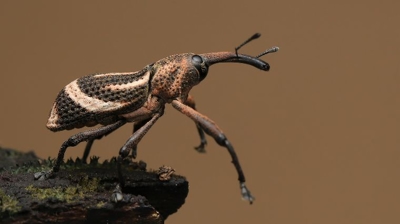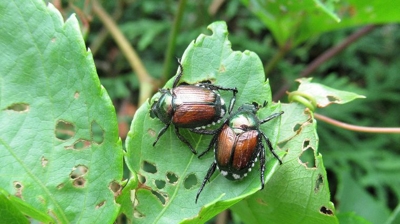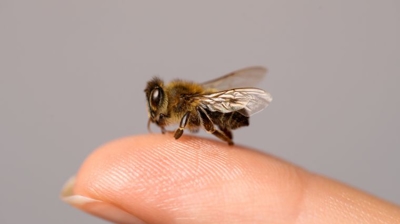
Aphids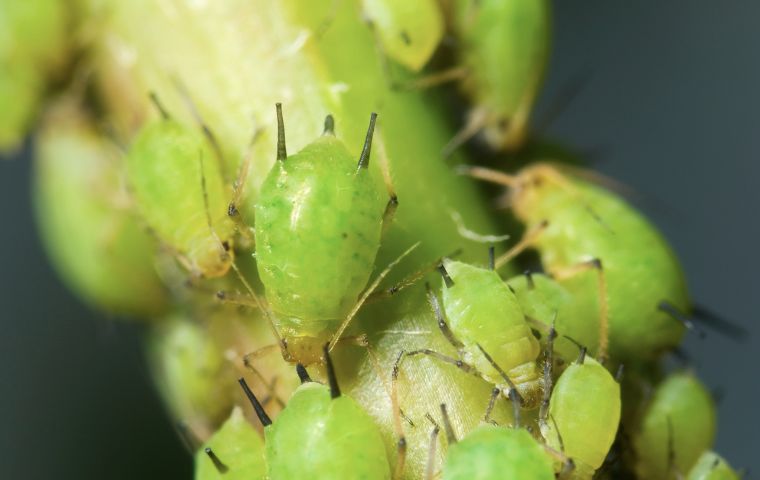
What Are Aphids?
Aphids are small, soft-bodied bugs that are among the most common pests affecting plants. They belong to the family Aphididae and are found on a wide variety of plants, both indoors and outdoors. Aphids are known for their ability to reproduce rapidly and their tendency to infest plants in large numbers, leading to significant damage.
Are Aphids Harmful?
Aphids are considered harmful in several significant ways. These tiny, soft-bodied insects can inflict both direct and indirect damage to plants, leading to economic losses and compromised plant health. Here are some of the ways aphids can be harmful:
Direct Damage to Plants
Aphids feed by piercing plant tissues with their needle-like mouthparts (stylets) and extracting sap from the phloem. This feeding method causes a variety of problems:
- Nutrient Loss: Aphid feeding diverts essential nutrients from the plant, weakening it and reducing vigor. This can stunt growth, deform leaves, and lead to premature leaf drop.
- Leaf Curling and Distortion: Their feeding can cause leaves to curl, crinkle, yellow, or become misshapen, reducing photosynthetic efficiency and the aesthetic quality of ornamental plants.
- Shoot and Flower Deformation: Young growth is especially vulnerable. Aphid infestations can distort developing shoots and flowers, affecting both ornamental value and fruit development.
Transmission of Plant Viruses
One of the most serious indirect threats posed by aphids is their ability to act as vectors of plant viruses:
- Rapid Transmission: Aphids can transmit viruses to hundreds of plant species. Some viruses, like the cucumber mosaic virus or barley yellow dwarf virus, are spread rapidly by aphids and can devastate entire crops.
- Economic Impact: Viral diseases often result in lower crop yields and diminished quality, causing significant economic losses for farmers and gardeners alike.
- Non-Persistent and Persistent Transmission: Some viruses are transmitted immediately after aphids feed briefly on an infected plant, while others require longer feeding periods, making aphid control challenging.
Excretion of Honeydew and Sooty Mold Growth
As aphids feed, they excrete a sugary waste product called honeydew, which creates additional problems:
- Attracts Other Insects: Honeydew attracts ants, which in turn protect aphids from natural predators in exchange for feeding on the sweet substance, further enabling aphid population growth.
- Promotes Sooty Mold: The sticky honeydew supports the growth of black sooty mold fungi on plant surfaces, which blocks sunlight, interferes with photosynthesis, and disfigures leaves and fruit.
- Aesthetic Damage: In landscape and ornamental settings, sooty mold and honeydew can make plants look unsightly and reduce their commercial value.
Rapid Reproduction and Population Growth
Aphids reproduce both sexually and asexually (via parthenogenesis), and many species can produce live offspring without mating:
- Exponential Growth: In favorable conditions, aphid populations can explode in a matter of days, overwhelming plants before predators or environmental controls can catch up.
- Colonial Infestations: Large colonies quickly cover leaves, stems, and buds, creating stress on the plant and allowing less time for effective intervention.
Aphid Appearance
Aphids are small, soft-bodied insects that can vary in color and appearance depending on their species, life stage, and host plant. Despite their size—typically 1 to 3 millimeters long—they are relatively easy to recognize when present in large numbers. Here’s what aphids look like:
- Size: Tiny, about the size of a pinhead—generally 1/16 to 1/8 inch (1–3 mm) long.
- Shape: Pear-shaped or oval bodies, with a soft, plump appearance.
- Texture: Soft-bodied, which makes them susceptible to being squashed easily. Some species may appear waxy or woolly due to secretions on their bodies.
- Color: Varies widely by species and environment. Common colors include: Green (most typical), Black, Brown, Gray, Yellow, Red and Pink.
- Antennae: Long and thin, projecting forward from the head.
- Legs: Six spindly legs that are often tucked underneath the body but visible under close inspection.
- Cornicles (Exhaust Pipes): One of the most distinctive features—a pair of small, tube-like projections on the rear of the abdomen, sometimes called "tailpipes." These cornicles secrete defensive fluids and help identify aphids from other small insects.
- Eyes: Aphids have relatively large, dark, compound eyes for their size.
- Wings: Some aphids are wingless (apterous), especially when populations are stable. Others develop wings (alate forms) during times of overcrowding or when they need to migrate to new host plants. Winged aphids have large, transparent wings with visible veins, and they are typically more slender than their wingless counterparts.
- Clustering: Aphids are often found in dense colonies, especially on new growth, undersides of leaves, flower buds, and tender stems
- Excreting Honeydew: You might notice shiny, sticky spots on leaves or surfaces below the infested plant—this is honeydew, a sugary waste product secreted by aphids.
- Presence of Ants: Ants are often found farming and protecting aphid colonies in exchange for feeding on their honeydew.
- Sooty Mold: Black moldy growth on the leaves may follow honeydew accumulation, providing another visual cue of aphid presence.
- Nymphs: Resemble adults but are smaller and wingless. They go through several molts as they grow.
- Adults: May be winged or wingless and capable of reproducing rapidly, especially during warm weather.
Aphids are tiny, soft-bodied, pear-shaped insects with long antennae and two rear cornicles. They may be green, black, yellow, brown, or red and are typically found in clusters on tender plant parts. Winged forms are slender with translucent wings, while wingless ones are rounder. Their presence is often accompanied by sticky honeydew and protective ants.
Learn more: What Do Aphids Look Like?
Learn more: Do Aphids Fly?
Aphid Habitat
Aphids are among the most common and widespread plant pests globally. They are found in virtually every climate where plants grow, but their populations thrive and become problematic in specific conditions and environments. Here's where aphids are most commonly found:
On Specific Parts of Plants
Aphids are host-specific feeders, and they prefer tender, nutrient-rich plant tissues. They are most commonly found in the following areas:
- New Growth and Tender Shoots: Aphids are drawn to young, soft tissue, which is easier to pierce with their mouthparts. They frequently cluster around growing tips, leaf buds, and flower buds, where plant sap is most concentrated.
- Undersides of Leaves: Many species congregate on the undersides of leaves, where they are protected from predators, sun exposure, and weather conditions. This location also allows them to access the phloem sap with less interference.
- Stems and Leaf Petioles: Aphids may also line up along stems and the base of leaves, especially when colonies grow in size.
- Roots (for Root Aphid Species): Some aphid species, like root aphids, live underground and feed on plant roots, often in mutualistic relationships with ants. These are more difficult to detect and can severely damage plant health from below the soil line.
On a Wide Range of Host Plants
Aphids are highly polyphagous, meaning many species feed on a broad variety of plants. They are most commonly found on:
- Ornamental Plants: Roses, tulips, chrysanthemums, petunias, and other flowering plants. Aphids can cause unsightly damage to blooms and foliage, reducing ornamental value.
- Vegetable Gardens: Common on crops like lettuce, cabbage, broccoli, tomatoes, peppers, squash, cucumbers, and beans. Feeding can reduce yield, transmit plant viruses, and deform vegetables.
- Fruit Trees and Bushes: Apples, peaches, plums, cherries, citrus trees, grapes, strawberries, and blueberries are frequent targets. Damage includes leaf curling, reduced fruit size, and premature fruit drop.
- Field Crops: Soybeans, wheat, barley, potatoes, and corn can host large aphid populations, leading to serious economic damage.
- Houseplants and Greenhouse Plants: Aphids often infest indoor plants, especially where warmth and humidity are consistent and natural predators are absent.
- Heavily Fertilized Plants: Plants treated with excess nitrogen tend to produce more lush, succulent growth—perfect for aphid feeding. Over-fertilized gardens and lawns may inadvertently invite aphid infestations.
In Association with Ant Colonies
- Aphids often coexist with ants that farm them for their honeydew, especially near anthills, tree bases, or plants with easy ant access.
- The presence of ants can indicate or even sustain aphid infestations.
Aphid Diet
Aphids are sap-feeding insects that primarily consume the phloem sap of plants, which is rich in sugars, amino acids, and other nutrients. Here's what aphids eat and how they feed:
Plant Sap
Aphids have specialized piercing-sucking mouthparts (called stylets) that they use to penetrate plant tissues, typically at the tips of stems or the undersides of leaves. Once inside the plant, they feed on phloem sap, which is the nutrient-rich fluid transported through plants.
- Phloem Sap: This sap primarily contains water, sugars (mainly sucrose), amino acids, and other nutrients essential for plant growth. Aphids target the phloem because it's relatively easy to access and abundant in nutrients.
- Sugar-Rich Sap: Aphids prefer sap that is high in sugars as it provides them with the energy they need to grow and reproduce rapidly. This is why aphids often congregate on newly growing plant tissues, where the sap is fresher and richer.
Nutrient Requirements and Diet
Aphids feed on plant sap because it provides them with the essential nutrients they need for growth and reproduction, particularly:
- Sugars: The primary energy source for aphids. They excrete excess sugar in the form of honeydew.
- Amino Acids: Aphids need amino acids for protein synthesis, which they extract from the phloem sap.
- Water: Sap provides the water aphids need, though they can also extract moisture from the plant to stay hydrated.
Types of Plants Aphids Prefer
Aphids are highly specialized in feeding on specific plant species, but many are polyphagous, meaning they can feed on a wide range of plants. Some species are more selective in their plant preferences, while others feed on a broad array of host plants. Common types of plants aphids target include:
- Vegetables: Lettuce, cabbage, tomatoes, peppers, cucumbers, and beans.
- Fruits: Apples, peaches, strawberries, grapes, and citrus trees.
- Ornamental Plants: Roses, chrysanthemums, petunias, and other flowering plants.
- Field Crops: Soybeans, wheat, barley, corn, and other staple crops.
Feeding Mechanism
Aphids feed by inserting their stylets into the plant's vascular tissue (the phloem) and drawing out sap. This feeding process involves:
- Inserting the Stylets: The aphid uses its piercing mouthparts to penetrate the plant’s epidermis and enter the phloem vessels.
- Sucking Sap: Aphids draw the sap into their digestive system, where they absorb the sugars and nutrients. However, they can't process all of it, so they excrete excess sugary waste in the form of honeydew.
Aphids feed on the phloem sap of plants, primarily extracting sugars and amino acids. They target plants with tender, nutrient-rich tissues, including vegetables, fruits, and ornamental plants.
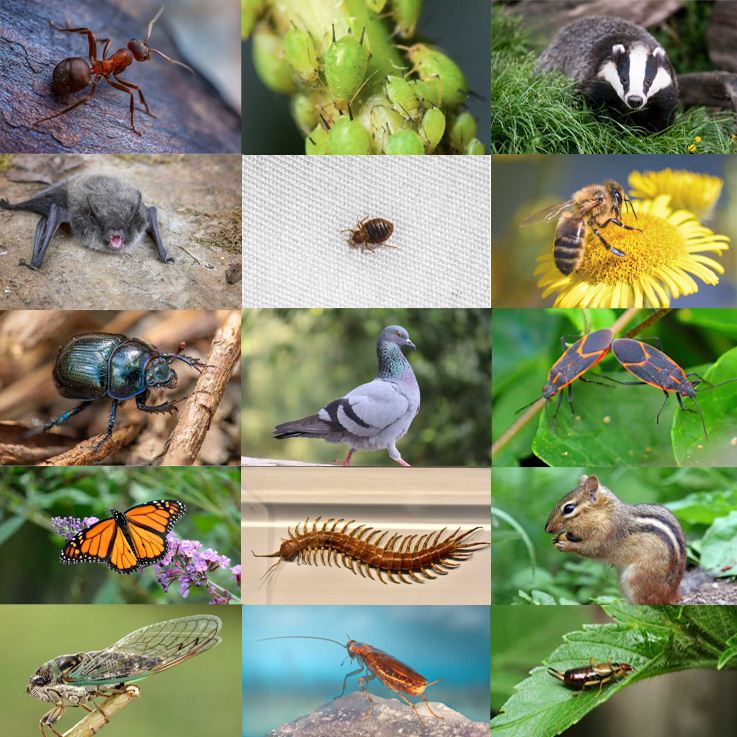
Aphid Life Cycle
The life cycle of aphids is complex and highly adaptable, allowing them to reproduce rapidly under favorable conditions. Aphid life cycles vary somewhat depending on the species and environmental factors, but they generally follow a holocyclic pattern (involving sexual and asexual reproduction) with some parthenogenetic (asexual) stages that accelerate population growth:
Winter (Overwintering Stage)
Aphid life cycles begin with overwintering eggs:
- Eggs: In colder climates, aphids typically overwinter as eggs on host plants or in protected areas (e.g., tree bark or beneath plant debris). These eggs are fertilized by males in the previous fall before winter.
- Dormancy: Eggs remain dormant throughout the winter, protected by the cold. In this stage, aphids do not feed or reproduce.
- Eggs Hatch: In early spring (or with the arrival of warmer temperatures), the overwintering eggs hatch into nymphs, marking the start of a new generation.
Spring (Asexual Reproduction and Colonization)
The springtime marks the beginning of rapid population growth, driven by asexual reproduction (parthenogenesis):
- Nymphs: After the eggs hatch, the nymphs that emerge are clones of the mother, and they begin feeding on the host plant immediately. These nymphs go through several molts (usually 4 to 6 molts) as they grow, eventually reaching adulthood.
- Rapid Reproduction: Female aphids are capable of giving birth to live young (called nymphs) within 1-2 days of maturing, and a single female can produce several offspring every day.
- Asexual Reproduction: In ideal conditions (warm weather, abundant food), aphids reproduce rapidly through asexual reproduction (parthenogenesis), meaning the females give birth to daughters without mating.
- Colonization: Aphid colonies can grow exponentially in the spring and summer. As aphids continue to feed and reproduce, they spread to new parts of the plant, and sometimes to nearby plants, causing widespread damage.
Summer (Asexual Reproduction Continues)
During the warmer months, aphids continue their rapid asexual reproduction:
- Clonal Populations: Most of the aphids in the colony remain female and reproduce asexually, rapidly increasing the population.
- Wingless Aphids: Many aphids remain wingless and continue feeding on the plant, giving birth to new generations of wingless nymphs.
- Winged Aphids (Alate Forms): When conditions become crowded, or the plant begins to suffer, some aphids develop wings. These winged aphids can fly off to new plants to colonize and continue the reproductive cycle.
- Migratory Behavior: Winged aphids can travel long distances to find new hosts, especially if the current host plant is no longer suitable due to overfeeding or environmental stress.
Fall (Sexual Reproduction and Preparation for Winter)
As the growing season winds down and the weather cools, aphid reproduction shifts to sexual reproduction, leading to the production of eggs that will overwinter.
- Sexual Aphids: In the fall, aphid populations switch from asexual to sexual reproduction. Special mating formsare produced, which consist of:
- Male Aphids: Males are produced specifically for mating with females.
- Egg-Laying Females: Female aphids are now capable of producing fertilized eggs, which will overwinter and hatch in the spring.
- Mating and Egg Laying: After mating, fertilized eggs are laid on the host plant or in protected areas. These eggs are resistant to cold and will remain dormant until the following spring.
Aphids have a complex life cycle that includes both asexual reproduction (through parthenogenesis) and sexual reproduction. In spring and summer, aphid populations grow rapidly as females give birth to multiple generations of offspring. During fall, aphids switch to sexual reproduction, producing fertilized eggs that will overwinter and hatch the following year. This adaptability allows aphids to thrive in a variety of environments, contributing to their status as one of the most successful and widespread plant pests.

Hear From Our Happy Customers
-
"Exceeds Expectations"
I can’t say enough positive things about this company... The tech that came out, Jarvis went above and beyond my expectations. Thank you guys, I will continue using your services.
- Jake M. -
"Wonderful Service"
Wonderful service. Jarvis is great. Took care of everything I needed. Thank you!
- Henry P. -
"Professional & Considerate"
I’m pleased with Miche services. Jarvis came today. Professional and considerate. Thank you!
- Judy B. -
"Great Communication"
Tech was on time, communication was great, and he accommodated my needs.
- Alonzo W. -
"Fantastic & Patient"
Jarvis was fantastic and patient. He answered my questions with an in-depth explanation and addressed all of my areas of concern. Would love for him to be my assigned tech going forward. Well done!
- Yonnette M. -
"Very Knowledgeable"
The tech that arrived was courteous, professional, and very knowledgeable. He was Great.
- Uerial I.

